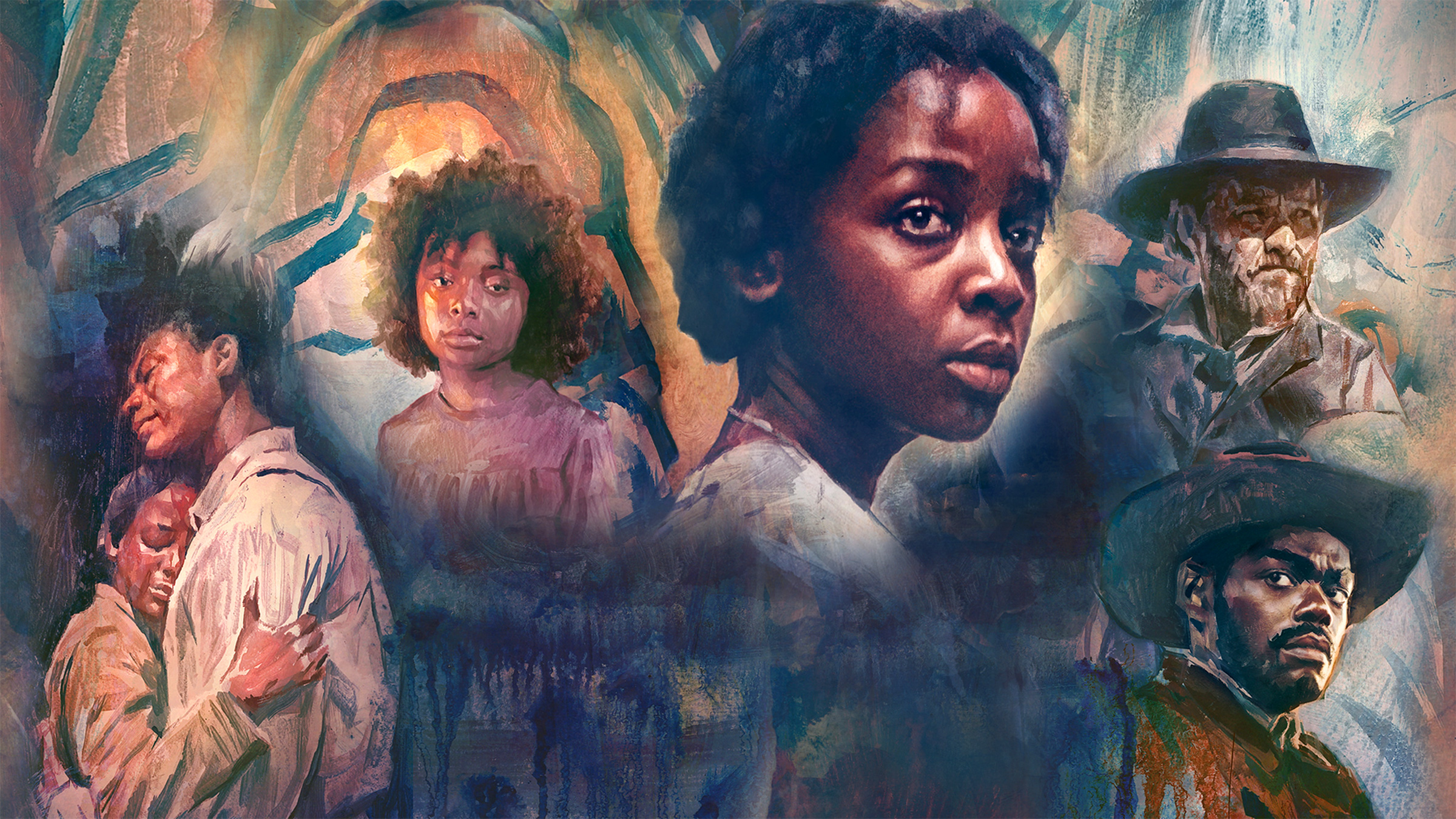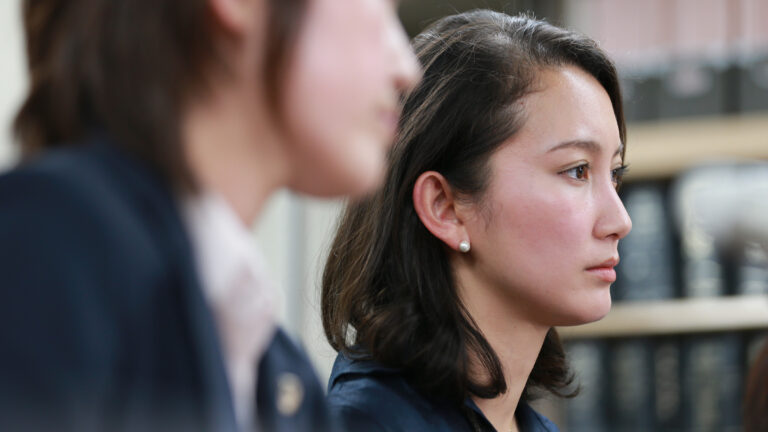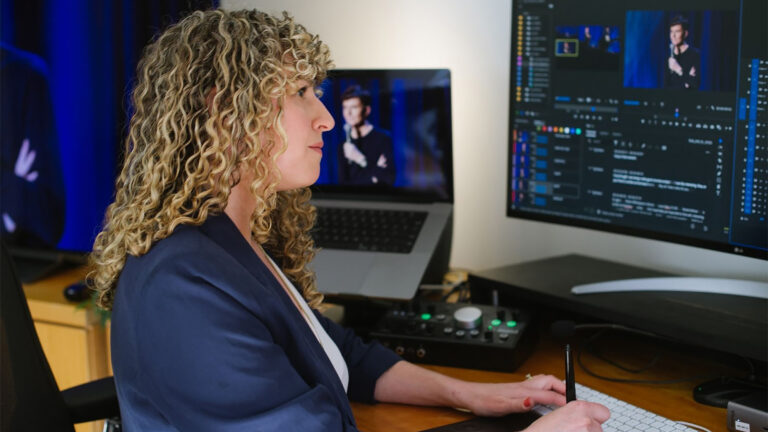Today, we’re talking with Oscar-nominee Joi McMillon, ACE and Alex O’Flinn about editing Oscar-winner Barry Jenkins’ Amazon Prime series, The Underground Railroad.
Joi McMillon was nominated for an Oscar for co-editing Jenkin’s film, Moonlight. And also cut Jenkins’ film If Beale Street Could Talk. She’s also cut the films, Lemon and Zola and the TV series, Girls.
I last spoke to Alex O’Flinn when he edited Chloe Zhao’s film The Rider, which was nominated for an Independent Spirit Award. He’s also edited numerous other features and series, including The OA, A Girl Walks Home Alone At Night, Vampires Versus the Bronx, and the documentary Autism In Love.
The series was also edited by Luke Doolan and Daniel Morfesis who were unavailable for our interview.
Listen while you read…
Warning: this article contains minor plot spoilers as well as media with scenes of slavery that some may find distressing.
HULLFISH: I’ve talked to both of you before, so it’s fun to have the band back together again.
O’FLINN: Yeah, man. Glad to be here.
HULLFISH: The first thing I’ve got to discuss is just the difficulty of watching some of this as an editor. I’ve done some edits that have been pretty brutal. Talk to me about your own mental wellbeing and watching some of this footage, especially the first episode.
MCMILLON: When I was working on the first episode I was also working on the last episode, Chapter 10: Mable. It was just one of those things where both of those chapters have very difficult material, and I feel like, as an editor, when you’re watching stuff for the first time, it’s very technical. So, I was thinking about trying to lay out the roadmap of how the episode was going to play out and what we should show and discuss with Barry what we shouldn’t show.
I think the first time that I actually got really emotional was watching Alex’s episode, South Carolina. It was because I wasn’t really dealing with those dailies, and so watching that episode back really showed me that there are so many emotions wrapped up in the show. It’s very powerful, but also there are some traumatizing images that we’re dealing with. In watching his episode, I realized we have to really take care of our audience, not overwhelm them, and always give them something to hope and look forward to in a series that can weigh on people quite heavily.
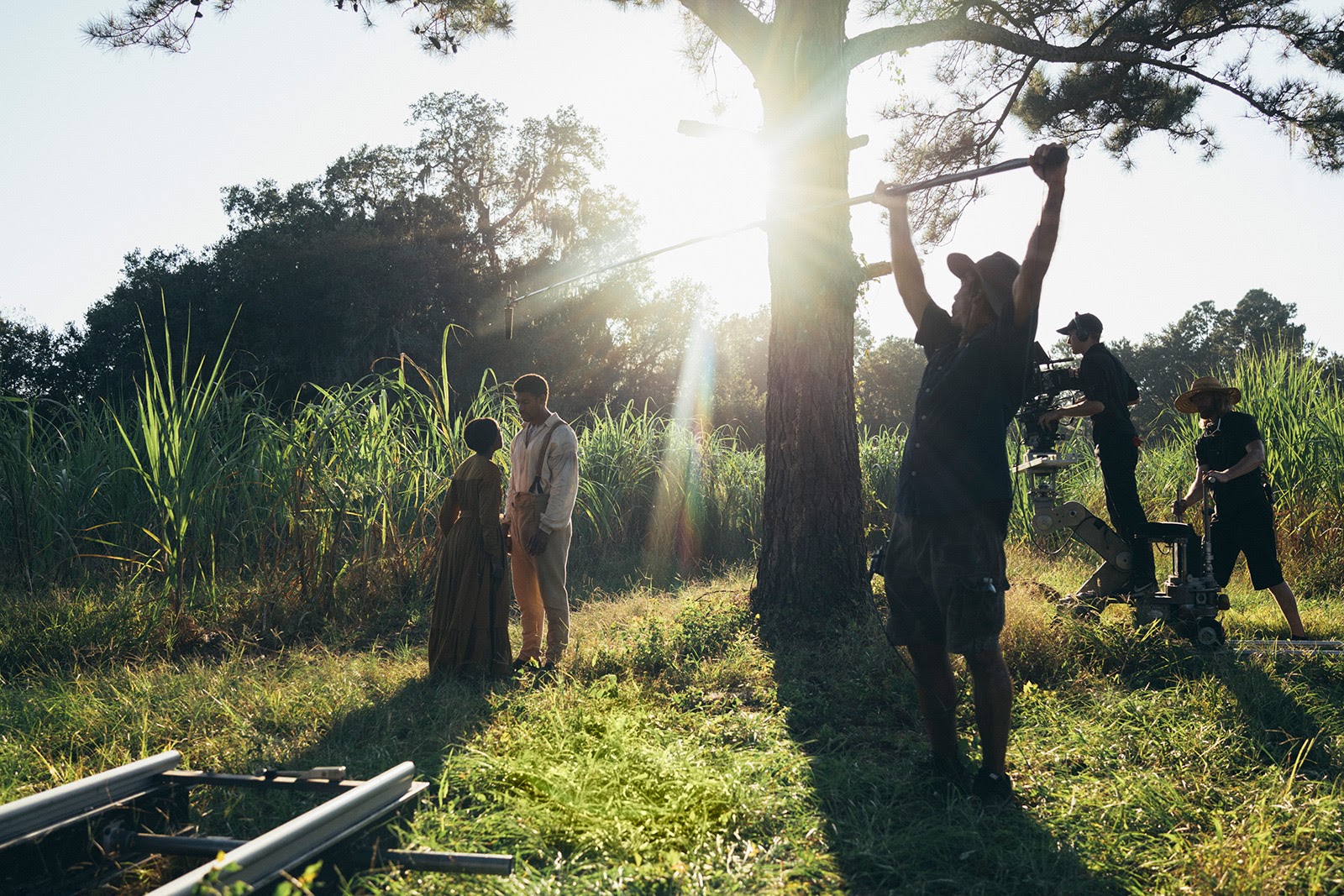
HULLFISH: Joi, you’ve worked with Barry before. I’m assuming that’s how you landed this particular gig. Alex, what about you? How did you come to work on the series?
O’FLINN: Joi and myself go way back. We met in film school at UCLA so we’ve known each other for 15, 16 years. Fun fact: Joi actually cut my thesis film at UCLA. That’s how we began our relationship, and then we became friends over the years.
I think, for me, the thing at the time was I hadn’t ever met anyone who was just an editor, who had wanted to just be an editor. I think when you’re in film school, everyone wants to be a director or a writer or a cinematographer. So, when I met Joi, I thought, “Oh my God. There’s this totally different world of craft and storytelling that is wide open that you really can have a gigantic impact on the story in the same way as every other department head.”
So, Joi was like a friend and a mentor to me over these last 15 years, and seeing her career go in the trajectory that it has, has just been a source of inspiration. I think she had seen the last film I had done, The Rider, and I think she was into some of the vibes that Chloé [Zhao] and I did in that film. When Underground came up, she made the introduction to Barry, and then I got to meet Barry and talk shop. So, that’s how it all came together.
HULLFISH: That’s awesome. I just got off the phone with Tatiana Riegel, ACE, who said to say hello, Joi. She’s been watching Underground Railroad and asked me to congratulate both of you for excellent work. She’s loving the series.
MCMILLON: Oh, she’s so kind. I love her.
HULLFISH: We were talking about the importance of having an agent and whether you need to have an agent if you’ve already got a director that you’re in with and maybe you could do the rest of your career with that person. What’s the value of having an agent? She felt like there was one.
MCMILLON: Definitely [laughs].
O’FLINN: Fun fact: Tatiana, myself, and Joi all have the same agent, the great Ann Murphy, who is amazing.
MCMILLON: Yes. Unsung hero, Ann Murphy. She’s working behind the scenes for us and we love her for that. I was naive about the importance of an agent because I’ve been blessed to work consistently throughout my career. There was probably only a three-month stretch where I was really trying to jump in the chair and become an editor and I wasn’t landing these indie gigs that had me thinking, “Ugh, do I want to be an editor? This is so hard.” I took a little bit of a break and came back with it, and that’s when I started working with Nat on Girls and Togetherness.
Once we did Moonlight, this door was opened for me, but I still had that stigmatism of being the assistant editor who got a chance, thinking, “Can she edit a film on her own?” Having an agent with that accessibility to not only know the players in the field but getting the right introductions, I got the great chance to work with Jake Scott on a film called American Woman, and I don’t know if I would have been taken seriously for that role if I didn’t have an agent from ICM representing me, getting me the intro, putting me in the room.
If you do have an agent representing you, I think that’s one of the things that, for some people, gets them to take you more seriously. Also, the agents know the rates, they know what you should ask for, and they know what you should be getting. I think for me, I would just say, “Oh, I’m happy with two grand a week. I just love to edit.” No, no, no. You need to ask for more.
HULLFISH: Oscar nomination! This is what this means, baby!
MCMILLON: Exactly [laughs]. I think sometimes as editors, we tend to just be grateful for the opportunity; and an agent says, “Yes, enjoy the work, never do it for the money, but you also should know your value and worth as an editor.” I think that’s one of the things that’s really great about having an agent like Ann Murphy is she’s not only my agent, but she’s also my friend. She looks out for us and tells us about the projects that may make more sense for our careers. It’s quality over quantity. That’s what I appreciate about her.
Never do it for the money, but you also should know your value and worth as an editor.
O’FLINN: Yeah, and I think also just having an extra cheerleader who can say, “Joi is the right person for this project,” or “Alex is the right person for this project,” or, “Have you thought about this editor? They don’t have the credits yet maybe, but they’re going to be someone really big in the future. They have a point of view that you should listen to.”
I think one of the things an agent does really well is look out for talent that the world might not know about, and then promotes that talent, specifically. Any great agent is going to see your potential before you see your potential, in some ways, and they’ll take that idea and pitch it to people, and I think that’s the great value. Also just having someone, like Joi said, who’s your friend that you can talk to during a project or discuss the merits if you’re on the fence about doing a project. They can say, “Let’s go through the pros and cons so that you don’t have to have your friends do that for you every single project.”
MCMILLON: Exactly [laughs].
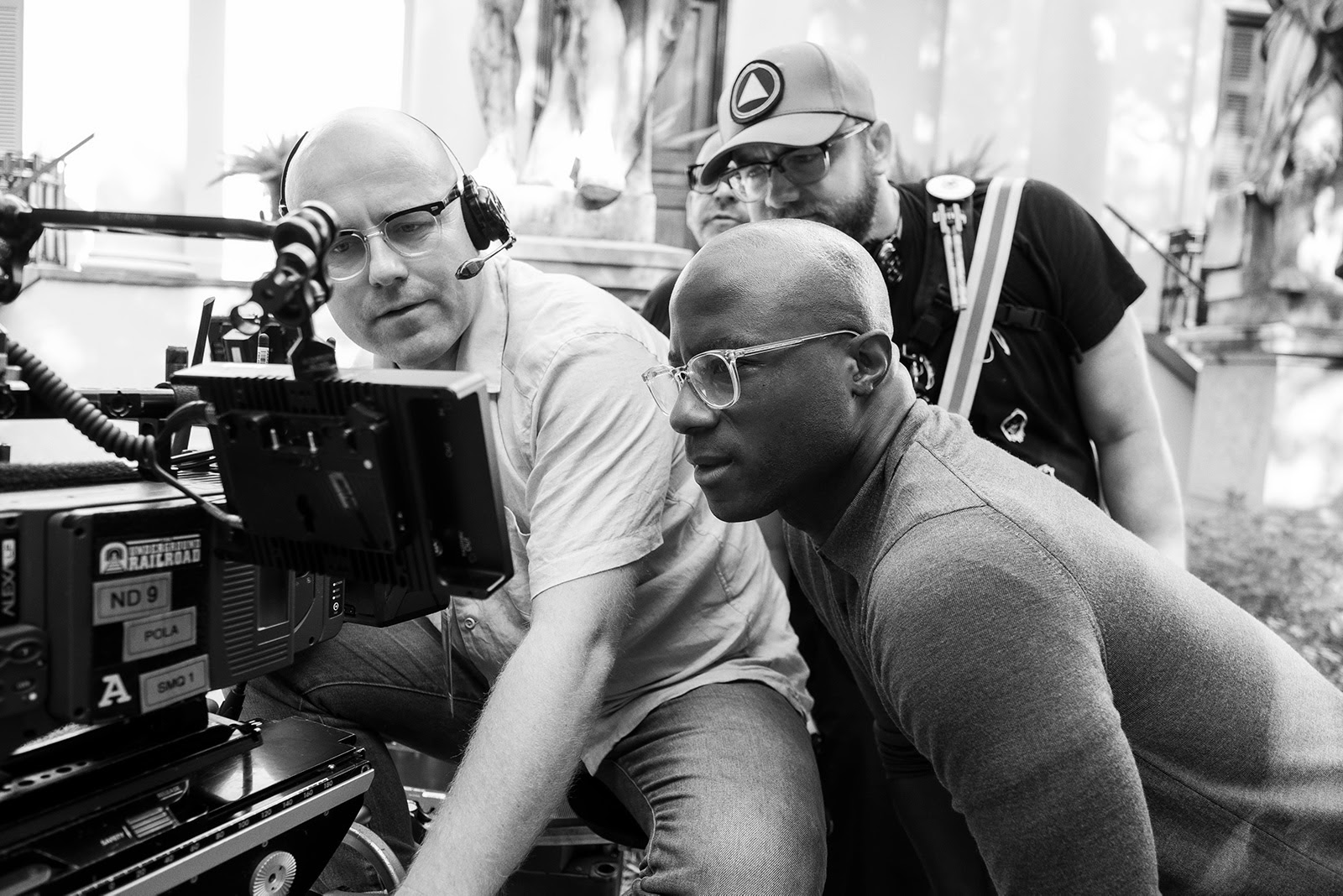
HULLFISH: Yeah, I get that. So, it’s very interesting that it’s not necessarily about just getting the project, but career advancement and career trajectory.
O’FLINN: Joi, I’d be curious to hear your opinion on this as well, but people think there was a five-year plan, that when you’re breaking into the industry once you have that first hit that you’re set and then you don’t need to chart a course, and that’s completely false. Your goals are constantly changing throughout your life, and to have someone who can also help you adjust to those changing goals, I found is amazing. It’s such a necessary tool to have.
MCMILLON: Yes, definitely. As Alex was saying, I remember my oldest nephew—after Moonlight won Best Picture—he said, “Now you’re rich,” And I said, “Oh, is that how that works?” Where’s that money coming from? It’s not coming to me.
You have the notoriety, but you don’t necessarily have the monetary value that people obviously associate with winning something like that.
HULLFISH: I don’t even know if Barry got rich, did he?
MCMILLON: Exactly. That’s the thing. Yes, you have the notoriety, but you don’t necessarily have the monetary value that people obviously associate with winning something like that. It’s also the type of projects you want to work on. I did a film with Janicza Bravo called Lemon, and I also did her latest project, Zola. I think Lemon was under $1 million and Zola was under $3 million, and so there’s not a big pot of gold at the end of these rainbows, but they’re projects that I really cared about and I wanted to work on. If you’re building your resume, you’re picking the films that best reflect your sensibility as a filmmaker, and those are not necessarily the $60 plus million dollar movies.
The Underground Railroad is the biggest project I’ve worked on, aside from our next project which is the Lion King prequel, but at the time The Underground Railroad was the biggest project I had worked on. So I thought, “Oh this is what it’s like to work on something and have these tools and this access to visual effects producers.” It was just a whole other level, and realizing it is more money, more problems, definitely. But it’s also really cool to see what the next level is like.
HULLFISH: Yeah, let’s talk a little bit about that because both of you did some indie films that were probably not very high budget projects, and now you’re getting a lot more dailies, as you said, a lot more problems on top of a lot more solutions. Describe the challenges of a new sandbox to play in.
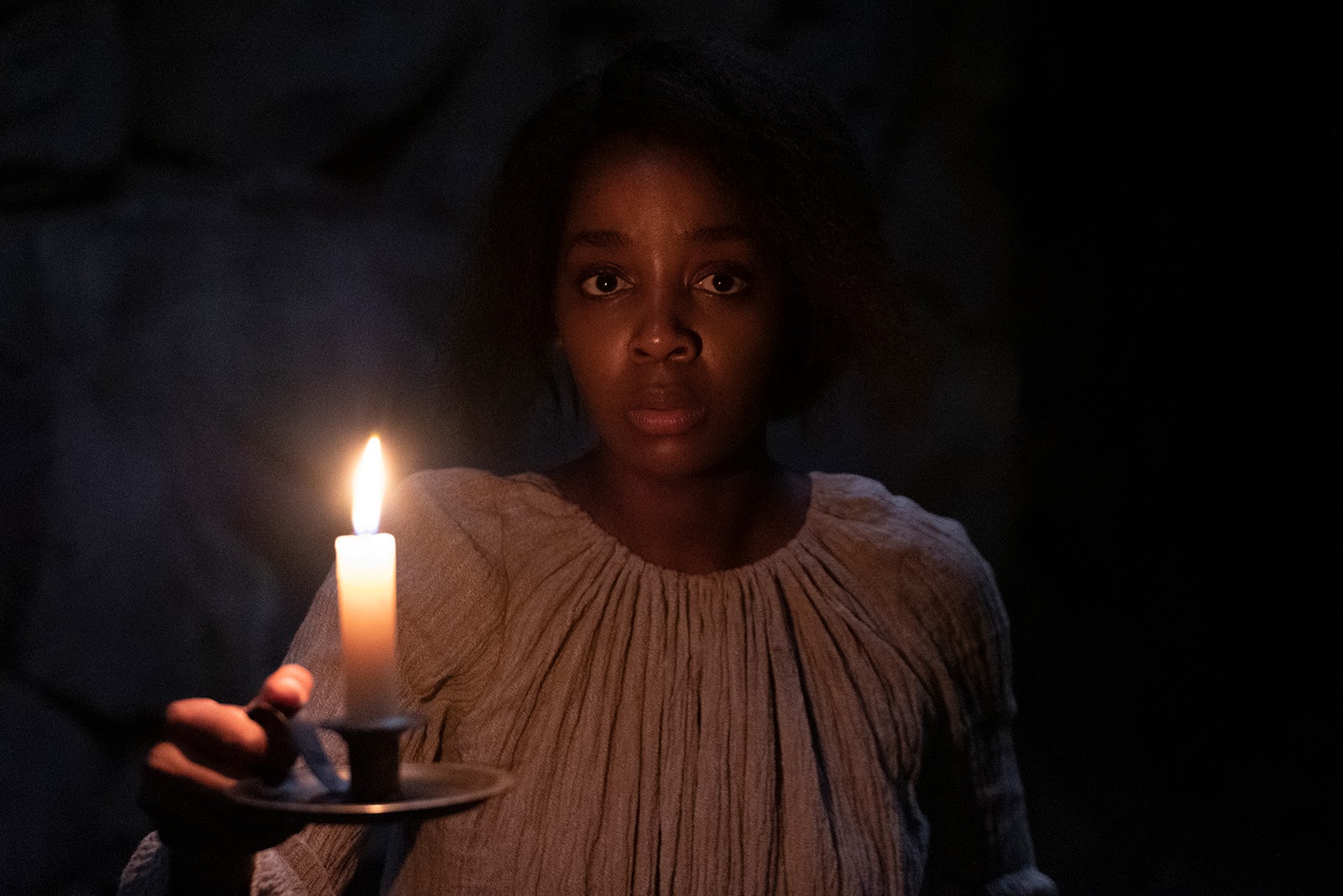
MCMILLON: Yeah, I remember reading the opening of the first chapter script, Georgia, and it started with Cora falling into a black void. I just remember the moment I read that I thought, “How are we going to do that? How are we going to shoot that?” The cool thing about the opening is we tie it back into Indiana Winter where we recreate that same moment. It’s a realization of, “Aha. Oh, we were starting here and now we’re back here.”
That whole entire section was shot on blue screen, and this was Barry and my first time working on a scene that’s completely blue screen. I remember when we were first watching that cut he said, “I need to see SOMETHING,” [laughs]. We said, “Yes, we’re working on it.” Working on visual effects on a film and working on visual effects and TV is very different. They needed us to at least have a course mapped out before they actually went in and started working on the shots. So, we had to dial in the first cuts of that section and say, “This is a blueprint of what we’re going to use. Can you start giving us some layers to work with as we’re developing the scene?”
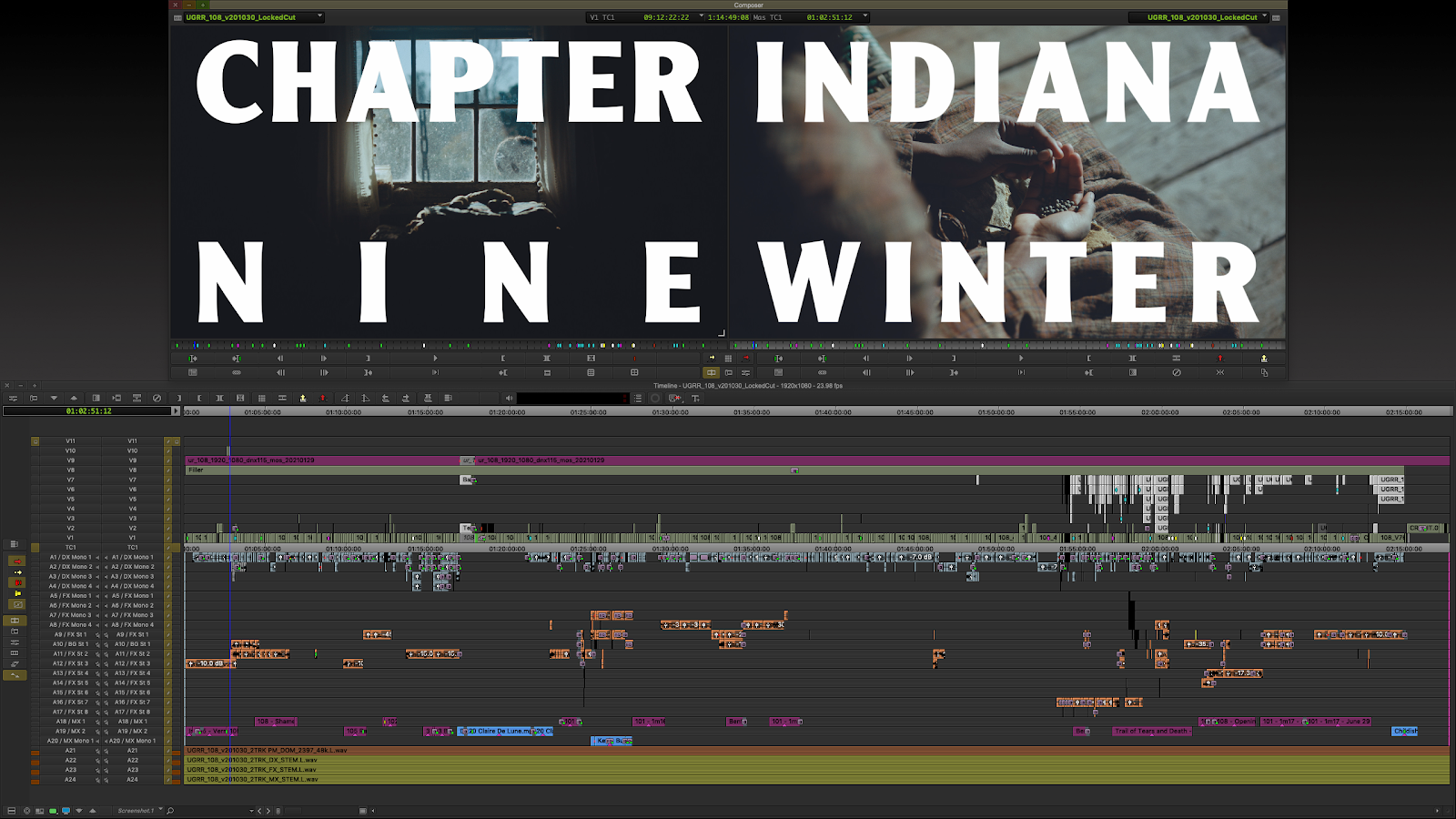
It is exercising a different muscle, trying to envision that this is a tunnel underground and these rocks are going to be falling and light is going to be coming through. Trying to envision that was a little difficult, but then once it all came together we were just really impressed with ourselves, thinking, “This totally works.”
HULLFISH: Alex, I want to know how you collaborated or whether you needed to. Were you just on separate episodes like so many TV editors do?
O’FLINN: We were on separate episodes, but I think the vibe that Joi and Barry created was this really nurturing collaborative energy. So yes, we are on different episodes, but I would show Joi cuts and scenes all the time, just asking, “Hey, what do you think of this?” Or, “Hey I took this and this out. Does this up the tension?” So yes, we are on different episodes, but there’s still that collaborative nature of knocking on each other’s doors and watching cuts. It was this really cool open door of information being exchanged, and it was exciting. Some great ideas came from those exchanges.
MCMILLON: Yeah, and we were doing this during the pandemic so we were the only other people we were hanging out with.
O’FLINN: Yeah.
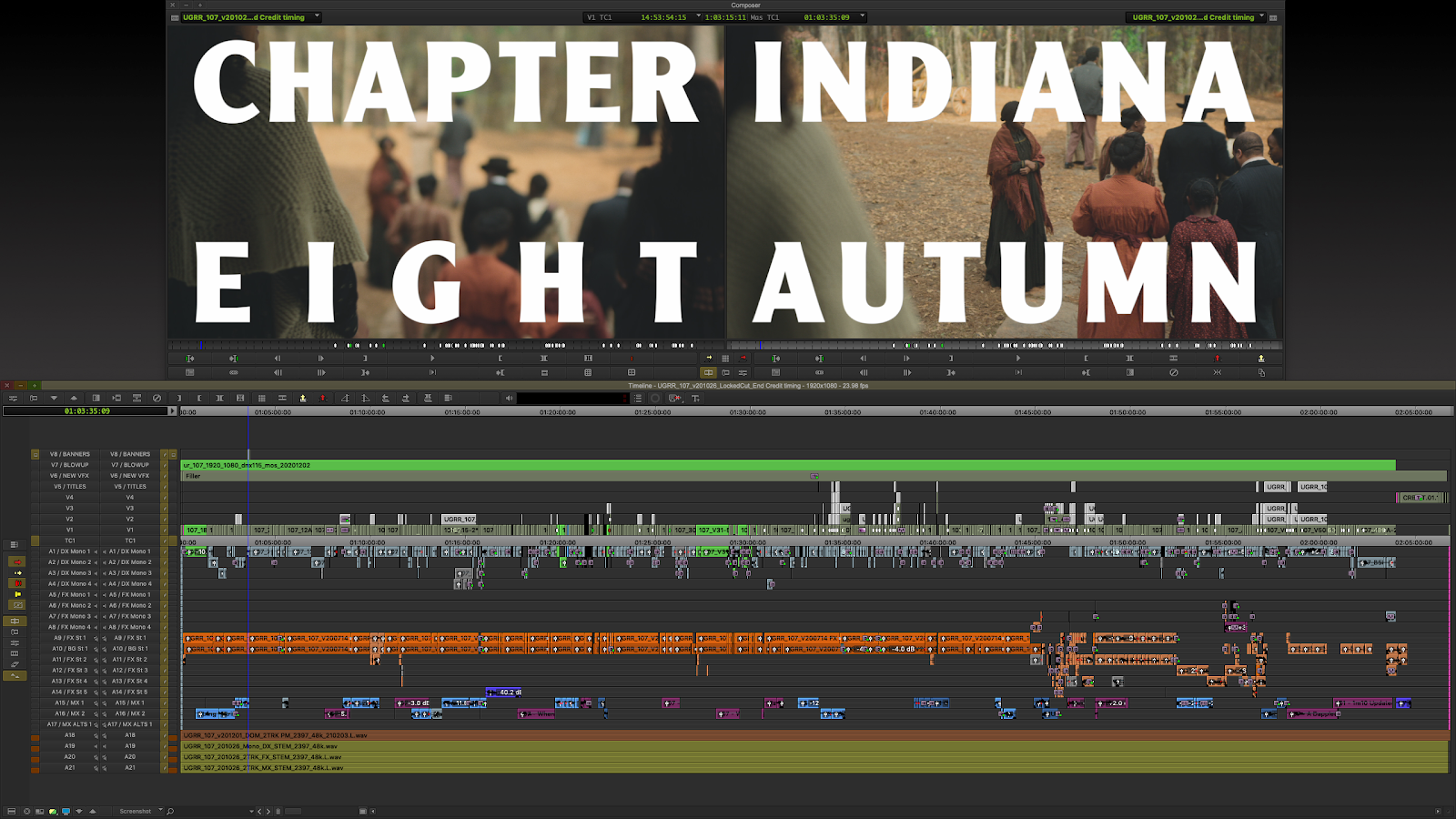
MCMILLON: We really had to like each other during this whole situation [laughs]. Actually, one of the things that I was so thankful for is that Amazon figured out a way for us to get back into the office, because I think so many people talk about having to work remotely, and you miss that camaraderie of the cutting room. I’ve been fortunate to work with some amazing editors like Nancy Richardson, Terilyn Shropshire, and Maysie Hoy, and that experience as an assistant working with an editor in a cutting room is invaluable. You learn so much. So, to work remotely and take people out of those close quarters, you lose that essence. I’m so thankful that we had the ability to still go in and work with each other because it makes a difference. It does.
HULLFISH: Explain how that worked. So, you were in lockdown, but you got a couple of people into the room together?
MCMILLON: Yeah, so I remember this clear as day, I don’t know if Alex remembers, but we were in a different office and I remember Alex saying, “We need to put together a plan in case we need to work remotely.” Was it January of 2020 that you were saying that?
O’FLINN: Yeah, it was probably late February, early March. It just seemed like, “Oh, this could be bad.” I talked to our post-producer and we discussed that maybe we should ask Runway to prepare us in the case that we have to go home, and he ran with that. That was great because I think they just got slammed two weeks later and they were out of gear. So, we got really lucky. Also, it’s crazy because we were in a different office, we were on a lot, and then we moved offices right before the pandemic—I’m talking like a week or two before lockdown—to the biggest office. This was like a pandemic-proof office. It was huge.
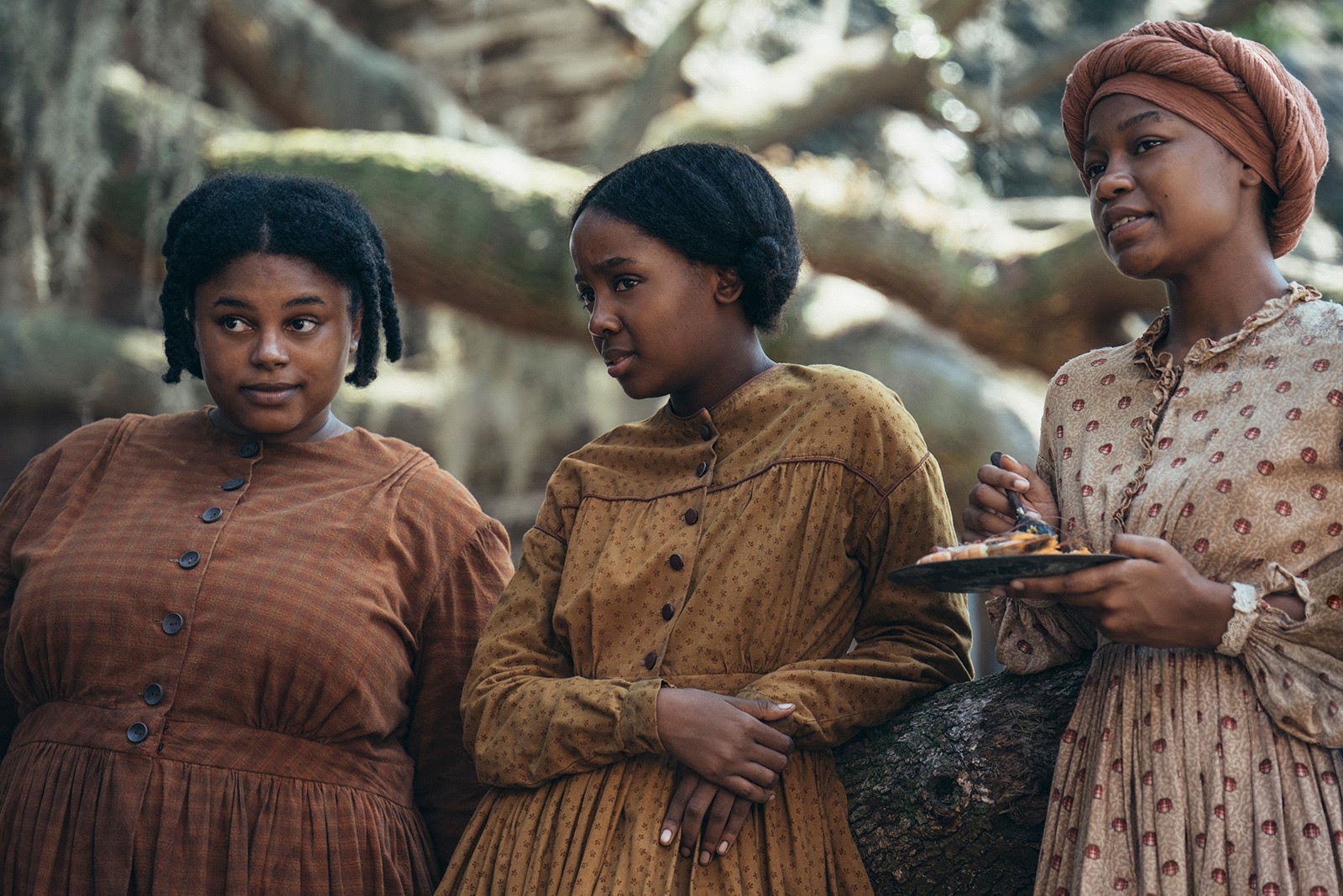
MCMILLON: It was gigantic.
O’FLINN: Yeah, with long halls. We each had our own office. You could be in someone’s room and be 10 feet away from the other person. That made it a lot easier to come back. We weren’t in a small space.
MCMILLON: Yeah, there were no cubicles. We moved a week before we were shut down to this bigger office space, and then the city went on lockdown and so everyone else had a system that they took home with them and because no one was in the office, I had the ability to still come in. I remember someone commenting that our offices looked like a post-apocalyptic office because it looked like everyone just dropped everything and ran, and that’s how it was. Boxes were unopened in rooms and it just looked like everything had stopped mid-process.
Our offices looked like a post-apocalyptic office because it looked like everyone just dropped everything and ran.
So, for about six weeks I was just coming into the office by myself. It was this huge space and it was so isolating. Then, Amazon figured out a way for us to get tested weekly and allowed Alex to come back, our assistant editors to come back, and then Barry was also coming in, but that was it. That’s how we worked for pretty much the rest of the process.
HULLFISH: Wow. This series is based on a book, correct?
MCMILLON: Yes.
HULLFISH: Did either one of you read the book prior to editing?
O’FLINN: Yes.
MCMILLON: Yes, I read it. Colson Whitehead is such a brilliant voice in the writing community. I first read his book The Intuitionist which was actually the first book of Colson’s that Barry wanted to do. It must have been the first two years that we were out in Los Angeles. Barry loved this book.
It ended up not coming to fruition for him to work on that, but then the first time he had mentioned The Underground Railroad to me was in 2016. This was I think in post on Moonlight toward the end, and he had been talking about how much he loved that book. Then, I remember later on that he said that they had gotten the rights, but he had already written If Beale Street Could Talk, and so the question was, “Which one of those was going to go first?” and Beale Street went first.
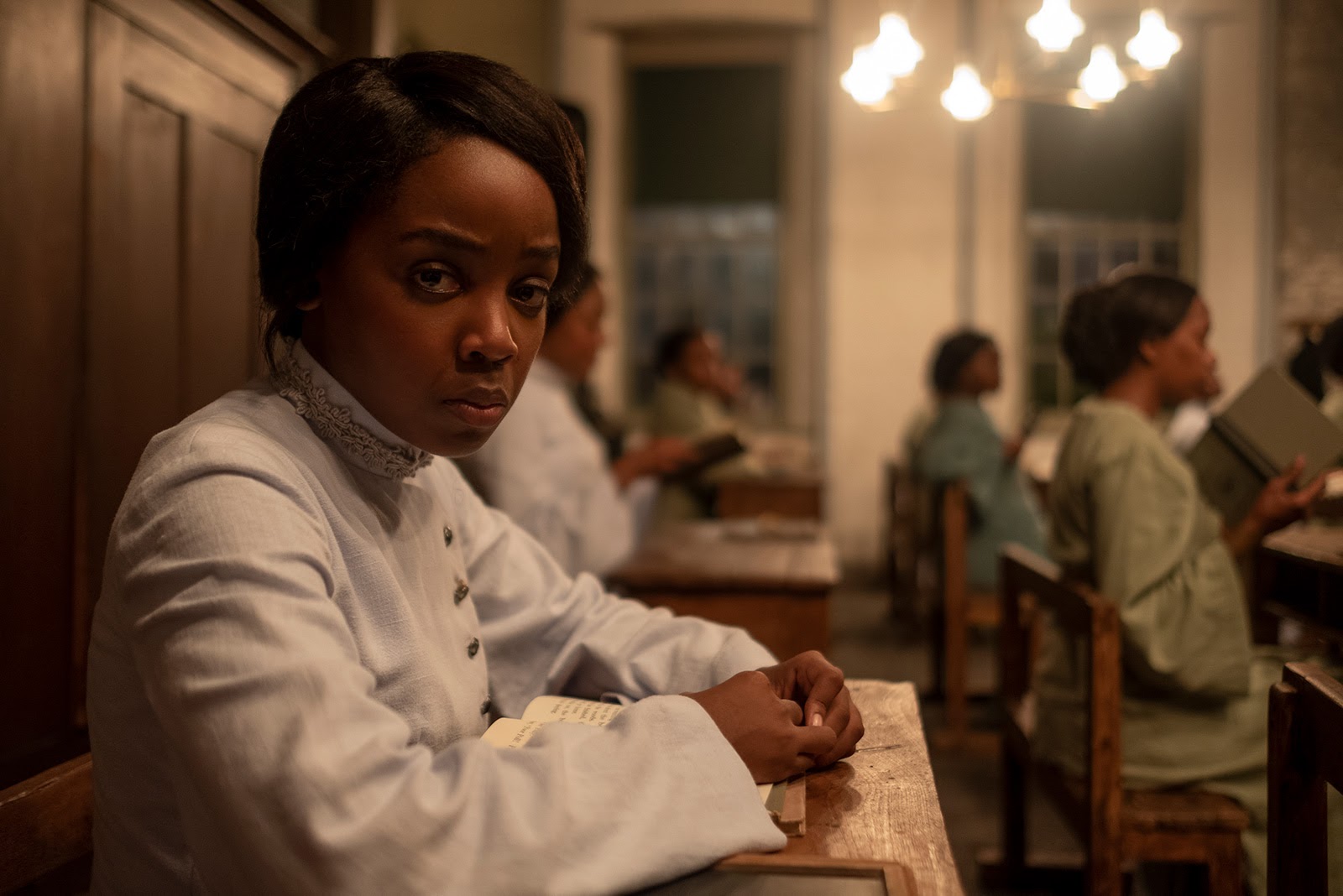
I just remember first reading The Underground Railroad and the character of Cora was just really so fully formed and so well-developed. That’s one of the things I love about Colson’s writing is when you go back and revisit what he’s put down on the page, there are so many layers and there’s so much depth there and so many elements that are so intriguing. Not only does he have a fully formed main lead, but also the side characters, the ones that you get to peep in for a chapter or two, are just as intriguing as your lead character. I think that speaks to how well-versed he is in creating these worlds.
HULLFISH: Alex, what about you on the research, and is there a danger to doing the research?
O’FLINN: I don’t think so. I think everyone has their own process for sure, but I studied English literature in college, so I didn’t come to film until later. To this day, I’m probably inspired as much by books as movies, sometimes even more by literature and looking at structure and how structure works in different forms, different genres. So, I was stoked to read Colson’s book, and to anyone who has not read it yet, run to your bookstore and just read that first chapter. It is some of the best writing of the century and that’s not hyperbole. The poetry of his prose makes you feel something.
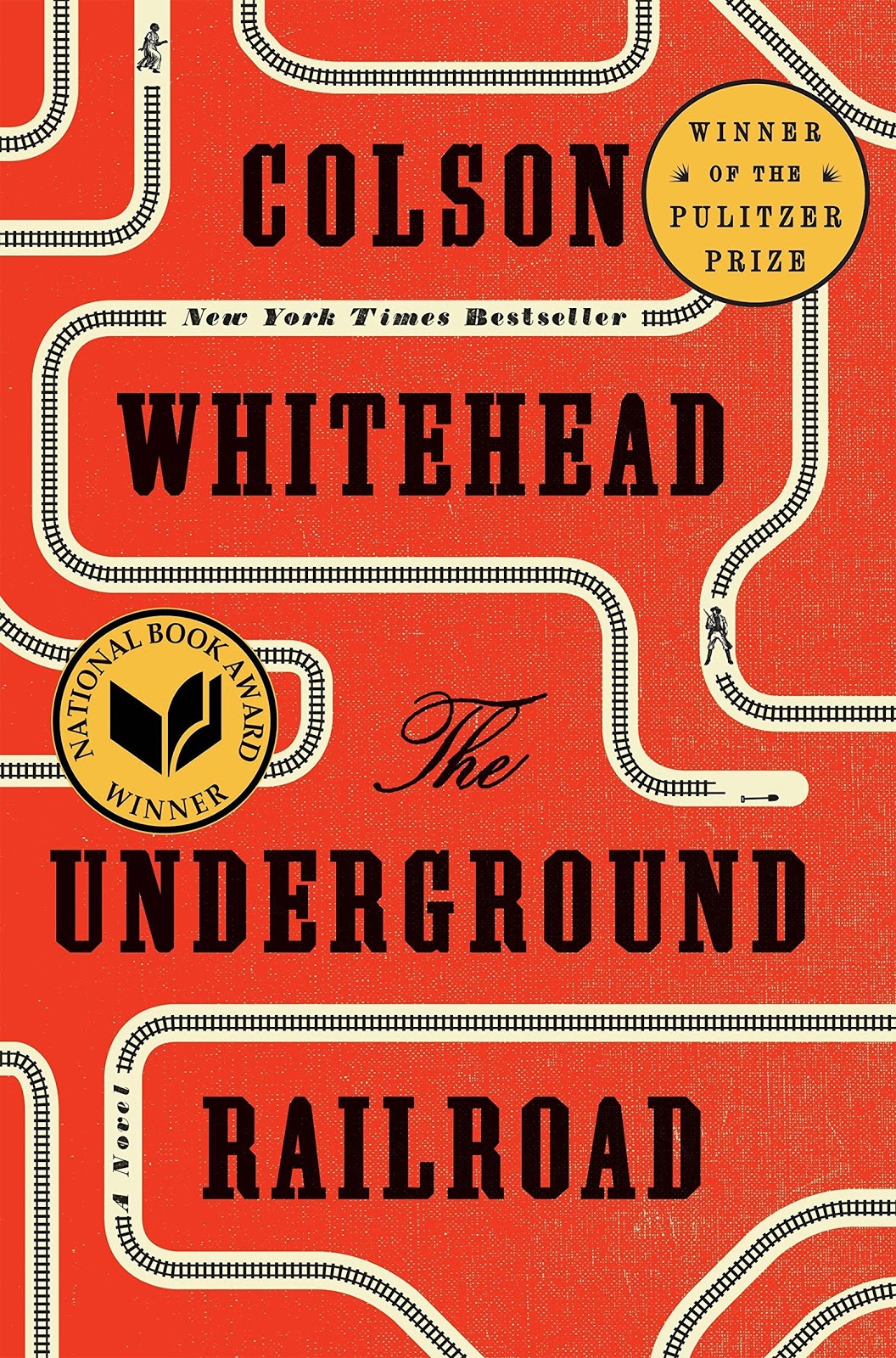
What I love about the series and its translation from book to television is that I think we honored the spirit of the book, but made it into its own thing. So, it’s not a direct translation, and one of the best compliments I’ve read in some of the press is saying, “This really captures the book, but it’s not exactly like the book,” and that was really special to read that for me.
HULLFISH: There’s some debate with people that I’ve talked to and interviewed about the value of that research and whether you should or shouldn’t do the research. That’s why I do these interviews is I love everybody’s perspective. There’s no right or wrong.
For example, I cut a movie that’s based on a book and I didn’t read it. When I got to the script, there were all kinds of things that made me think, “This makes no sense,” and they’d say, “Well, it’s because of this and this…” I’d say, “That’s in the book, but it’s certainly not in the script.” Everybody else had read the book and they just knew the story, so when you have a plot hole they would fill it in their head because of the book. Sometimes that happens.
But Tatiana [Riegel] just said that she hadn’t watched any of the 101 Dalmatians movies before editing Cruella. Everybody’s got their take on whether it’s valuable or not.
As an editor, I really try to divorce myself as much as possible from the script once I get the footage.
O’FLINN: I think you raise a really interesting point, Steve, in that it’s not only just if you’re working on something that comes from source material, but there’s also that translation from the scripts to the actual footage.
As an editor, I really try to divorce myself as much as possible from the script once I get the footage because the weird thing about film is that it’s a visual medium that starts out in the written word. You’re starting out with material that is actually not what the art form is in its finished form. So, when we get footage, that’s the first time that we’re actually sculpting with what the thing is going to be in its final form. You have to really divorce yourself from what was written on the page and the vision that the script had to what the actors and the directors did on the actual day.
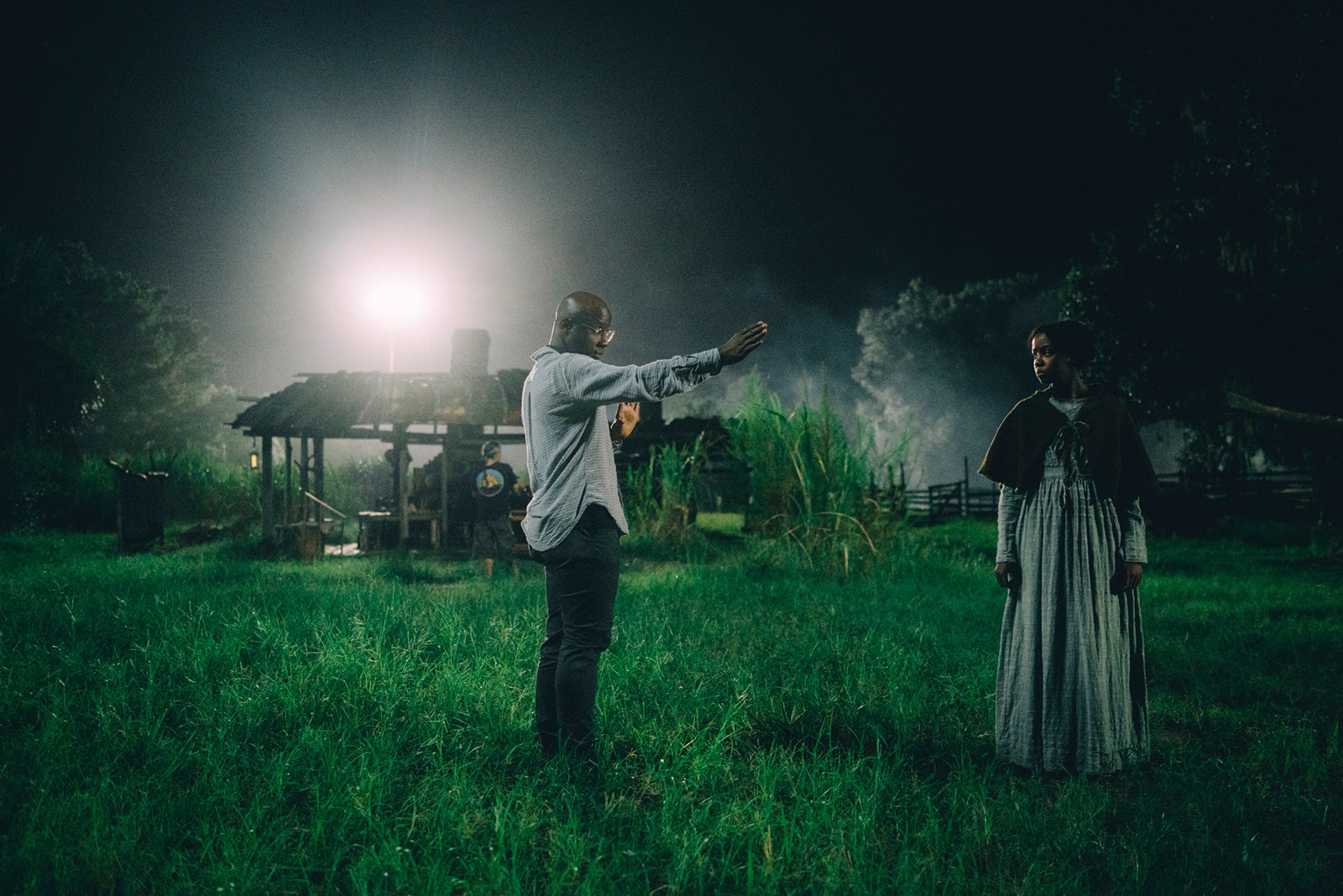
I think with Barry—and it’s awesome to watch this—he really evolves the script. He rewrites the script on the set with the actors from take to take. You really have to be paying attention to those dailies and seeing how they’re evolving, and work with that. That becomes your source material now.
MCMILLON: Definitely, and Barry has that quality of always being prepared to evolve. He’s not precious about what’s on the page, even though his hands are in the writing of what’s on the page. He allows it to become what it’s supposed to be.
A prime example of that is in Indiana Winter when Mingo and John Valentine are having that debate. That was originally written as speeches. In the novel, one person talks, sits down, and then another person talks. Barry was in rehearsal with them and as they were rehearsing they were allowing each other to go back and forth, and Barry said, “Oh, this makes more sense, to make it a debate,” and as an editor, I really appreciate that because the debate is so engaging and it gives you an opportunity to cut to different reactions to include each person listening to the other person. It’s now way more engaging than if you’re just on someone giving a speech.
I think turning it into the debate also allowed these actors to now start to embrace and really perform what they’re saying, be it more emotional or incorporating an angry accent. That’s what the process should be, ever-evolving so it finally takes shape to what the final product is supposed to be.
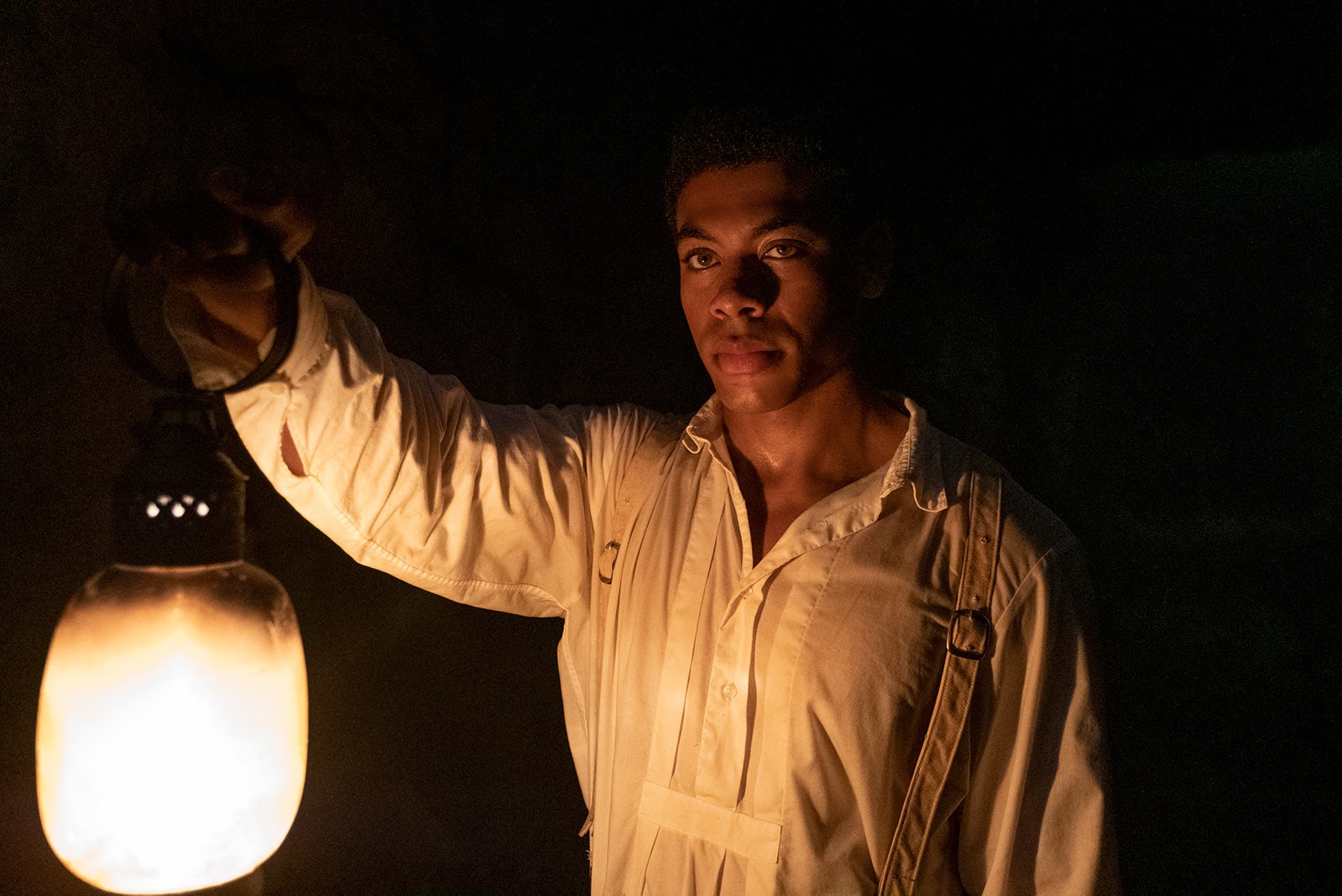
HULLFISH: When you have a director that is directing in that way—where scenes and the script are evolving through takes—does it change the way that you watch dailies? I’ve heard some people say they watch dailies from the last take to the first take. Do you find that you have to watch them any other way to be able to see the evolution?
MCMILLON: I think because of Barry and James Laxton, our cinematographer, their cinematography is definitely like a language, and they never do the same thing each take. So, you have to watch it all because if you don’t watch it all, you’ll miss a really cool shot or you’ll miss the fact that on this take they just focused on the character Homer, or on this take this is the point of view of Ridgeway that you were looking for but existed only in take eight, then they never did it again. I feel like you have to watch it all, or Barry’s going to tell you, “I remember we did this one shot, this one thing.” Sure enough, you go and he’ll find it. So, you really do have to process all the dailies, I think.
HULLFISH: Well, processing the dailies, I understand. Most people will say that you got to watch everything, but some people watch everything from take one to take eight. Other people watch things from take eight backwards through to take one.
MCMILLON: Oh, what order. I see.
O’FLINN: I like linearity because I like to see how something evolves. For my process—I think a lot of editors would disagree with this—but for me, I always have to start at the beginning. Even if they’re shooting out of order, I’ll put those scenes together, but those are sketches. One of my mentors said, “When you’re editing while they’re shooting, really what you’re doing is learning the footage.” That’s the main goal of that. To think that you’re going to cut this scene that’s in the middle of the show and that’s just going to be perfect with no notes, that’s wishful thinking.
For me, once I have that sketch of the whole thing, I really have to start from what that first frame is because I want to feel like I’m on a steady foundation. As an audience member watching this first scene, then I’m just thinking, “Where are my emotions? What do I want to see next as a viewer?” That’s driving how I’m going to edit the next scene. So, if I don’t know what that is before, I can’t move forward. I know everyone has their different process, but for me, there’s something about that linearity, being able to really just track the evolution of something that is very grounding for my process.
So, with dailies I’ll have a stringout of everything on one timeline, I’ll watch it like a movie, and I’ll just take notes. I don’t always refer to my notes later on, but I find that the act of writing down my emotions to footage helps me retain the information.
The thing that I’m always looking for when I’m writing notes is authenticity.
MCMILLON: Yeah, I do the same. I start with take one and go all the way through. The thing that I’m always looking for when I’m writing notes is authenticity. There’s usually that one take that feels so real, and you think, “I really believe you,” and that’s usually the one. I’m always looking for it. It’s always in the eye. So, that’s the one that makes me think, “That’s probably the one that you’re going to use the most.” Or I’ll write down the line that they deliver, writing, “This is the gold. Remember this moment. This is going to be the one.” That’s probably what I’m really looking at.
Also, I can see through the evolution, what Barry is responding to. I can tell what he’s telling James to now focus on. So, I can tell, “This is the take that he really wants to use because they really nailed the camera work. When I go back to that take, I see the little bumps or the things I might have to take out of that performance to make it sing, but ultimately, I’m basically trying to find the breadcrumbs that they’re leaving me and figure out why they’re changing. Why is the camera moving? Why are they focusing on this person now? That tells me who Barry wants to be on in the moment.
HULLFISH: That totally makes sense. Let’s talk a little bit about the evolution of an episode and also the evolution of the entire series. I’m assuming that you didn’t have to deliver anything until you delivered everything. Is that correct?
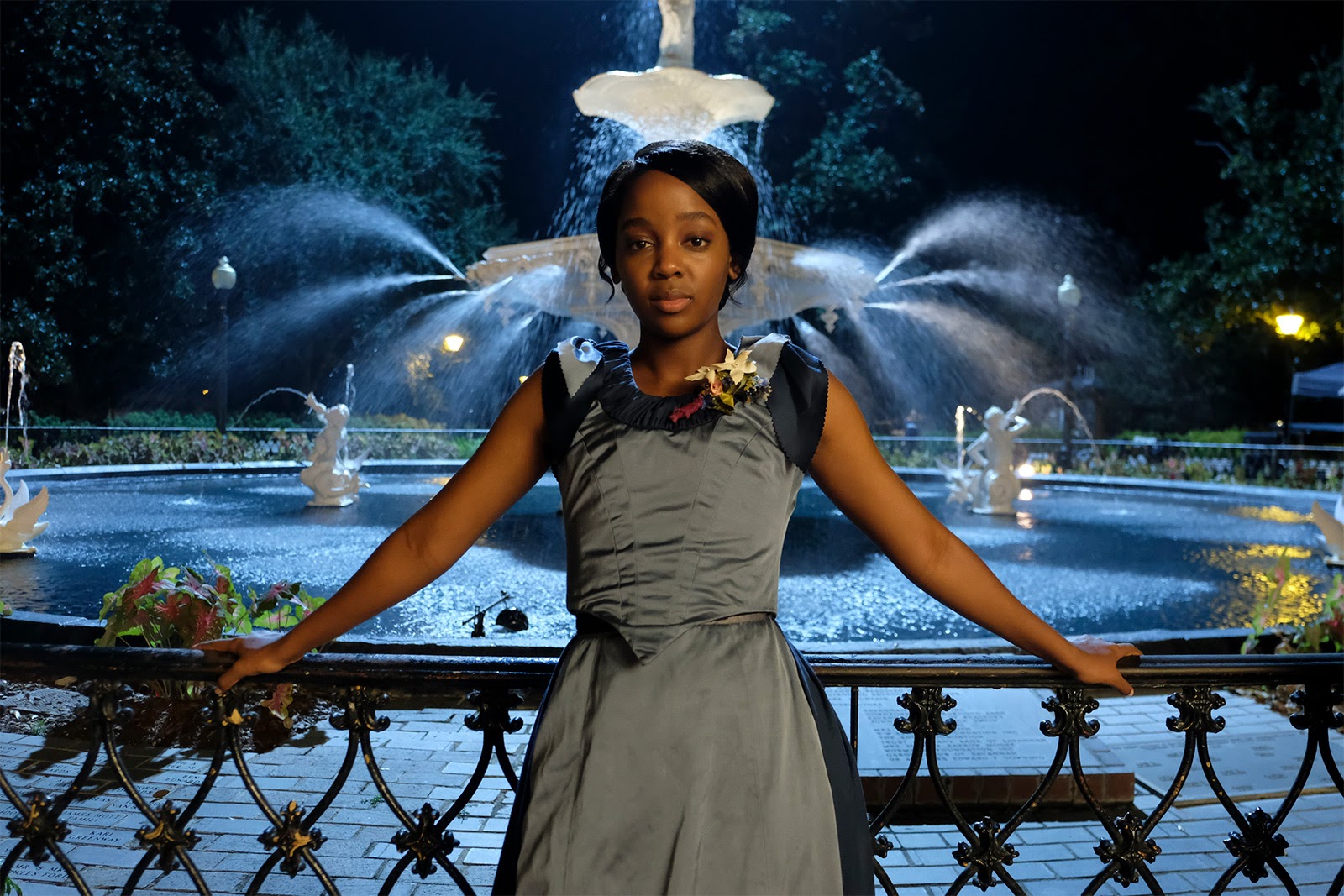
MCMILLON: Yes and no because the localization process is one of the things that you have to take into account with streaming. You still are on a delivery schedule, especially if everything’s going to drop at once. Ours not only dropped at once, but it dropped globally all at once. So, there was a schedule that we were having to keep in order for the languages to be translated and for everything to be processed, and we did it out of order. I think you were up first Alex, right? Locking-wise and delivery.
O’FLINN: Yeah, “Chapter 2: South Carolina” was the first thing we mixed.
MCMILLON: We did it all over the place. The last ones that we mixed were chapter 1 and chapter 9, I believe.
HULLFISH: On some other series that drop like this, people say, “It’s really valuable because we could go back to episode 1, and because of what happens in 9 if we did this it would be like foreshadowing.” Did you find that you were able to do that or that you wanted to do that?
MCMILLON: Definitely, because as I mentioned earlier, I was working on chapter 1 and chapter 10 at the same time. I think once we figured out the tone of what Chapter 10: Mabel was supposed to be, it definitely informed us how important Mabel is to Cora’s journey.
We didn’t originally have those flashbacks to Mabel throughout the series, but once we thought, “We want the audience to not only be on board with finally figuring out what happens to Mabel but to also care about what finally happened to Mabel.” So, one of the things that we did is taking that character and weaving her throughout the series.
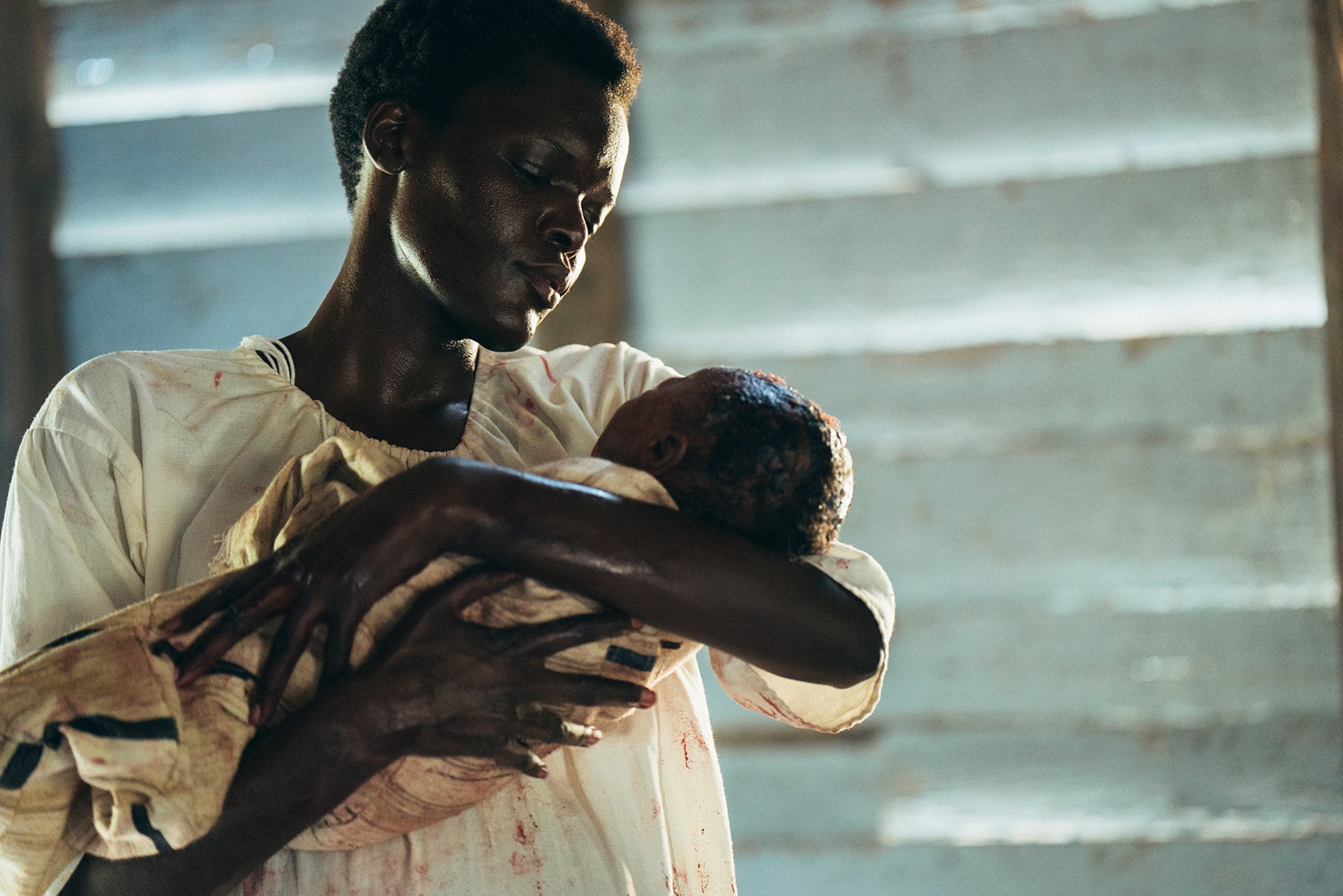
She already existed on the page in South Carolina when Cora has that dream about her and she also existed giving birth, but those flashbacks that Cora has when she meets Ridgeway for the first time and then in the Tennessee episodes where we drop Mabel in, those were something that we learned by figuring out how the ending was going to finally play out.
HULLFISH: Interesting. Alex, you mentioned how your mentor said, “It’s crazy to think that you could cut scene 27 and think it’s going to stay when you haven’t seen scene 26 and you haven’t cut scene 28.” What are some of the things that happen to a scene that you’ve cut during dailies when you see it in context? What are some of those things that, as an editor, you think, “Oh, I thought this was perfect, but now that I see it in context, no it’s not”?
O’FLINN: Well, I think you don’t really know what you need at that part of the story. So, for instance, let’s say you’re smack dab in the middle of the film and you cut the scene, you might watch it as an isolated scene and think, “Wow, this is great.” I pat myself on the back, then, you watch it in context and you think, “I want to fall asleep,” or, “Oh man, this is way too fast. We’re not really soaking in this character’s realization of what just happened two scenes ago.”
I pat myself on the back, then, you watch it in context and you think, ‘I want to fall asleep.’
There was one scene actually in 108 when Cora and Royal are in the vineyard and Cora sees a slave catcher and she has this reaction and starts running because she thinks that he’s after her. I cut it and it had a sense of motion that was really cool, but, to what Joi was just speaking about with the flashbacks, we realized that it’s okay to put some of Cora’s past into these episodes as these brief flashes, not necessarily thinking, “Okay, cool. We’re going to be in this flashback scene,” but you’ll see these glimpses of the past.
I noticed when she was running down that vineyard, it had the motion of a locomotive, and we had received this awesome track from our sound designer, Onnalee [Blank], that really made the locomotive sing. It sounded like a real train and had all the textural elements. So, I took that, laid it under, and used that as this moment where I can go into Cora’s past, using the motion as this accelerator. It really illustrated, I think, what she was running from in that moment that allowed us to get deeper into her mind.
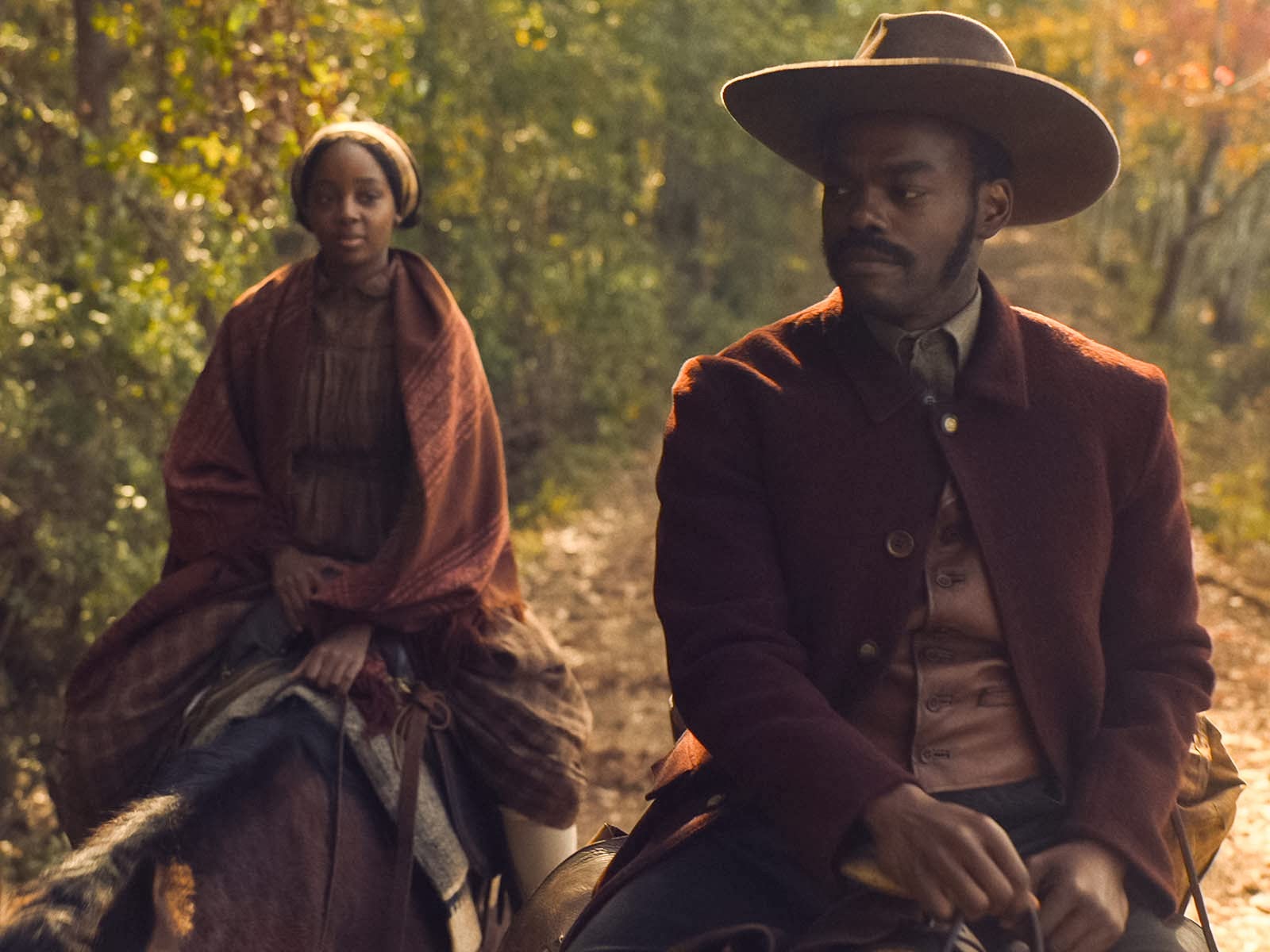
I think that’s something you just would never do on the first pass. You had to see that context of, “What do we need at this moment of the episode? We haven’t really dived into some of the stuff we saw earlier. Is this a moment we can get into that on a deep level?”
HULLFISH: So, in this telling of this historical escape system, they’ve taken the metaphor of the Underground Railroad and turned it into a literal train that’s hidden underground. I used to live along part of the underground railroad near Canada, so I knew it wasn’t an actual train, but tell me about that part of the film and that magical realism.
MCMILLON: Yeah, I think that’s one of the things that when Barry heard “the underground railroad” as a young kid, he envisioned an actual train. Then, when you find out that it actually was just stops, different safe houses throughout the country that you could go to and make it to the next stop, he thought, “Oh, I was thinking of an actual underground railroad. That would be cool.” Then, what he envisioned as a young boy came to fruition in Colson’s novel. So, I think that’s one of the things that he really connected to was the “what if.” That’s one of the things that I love is that Colson takes these experiences in America that were so traumatizing and adds this fantastical element in this element of escapism by giving you this physical train underground.
Of course, everyone says, “It’s too loud. They would have heard it,” and I say, “Well, it’s not true. You couldn’t go underground with a train with smoke and everything,” but “what if?”
I love the costumes and the set design that they’re able to create at these different stations throughout the series from Mark Friedberg, our production designer, and Caroline Eselin, our costume designer.
As a viewer, you feel like you’re transported to this place, especially in Chapter 8: Indiana Autumn. I love her whole dream sequence where she’s experiencing these different stations and all these fantastical elements that are woven into the episode. It definitely took what Colson had on the page and I think enhanced the idea of, “What if you could go underground and there were all these different stations, all these people, and all these different networks moving throughout the country?”
HULLFISH: Tell me about those dream sequences. Does the editing process change in a dream sequence or are you just cutting the best stuff and finding the right moment like always?
MCMILLON: I can speak to the one that I did at the top of “Tennessee Proverbs.” That didn’t exist, that was something that we found as an opening to that episode.
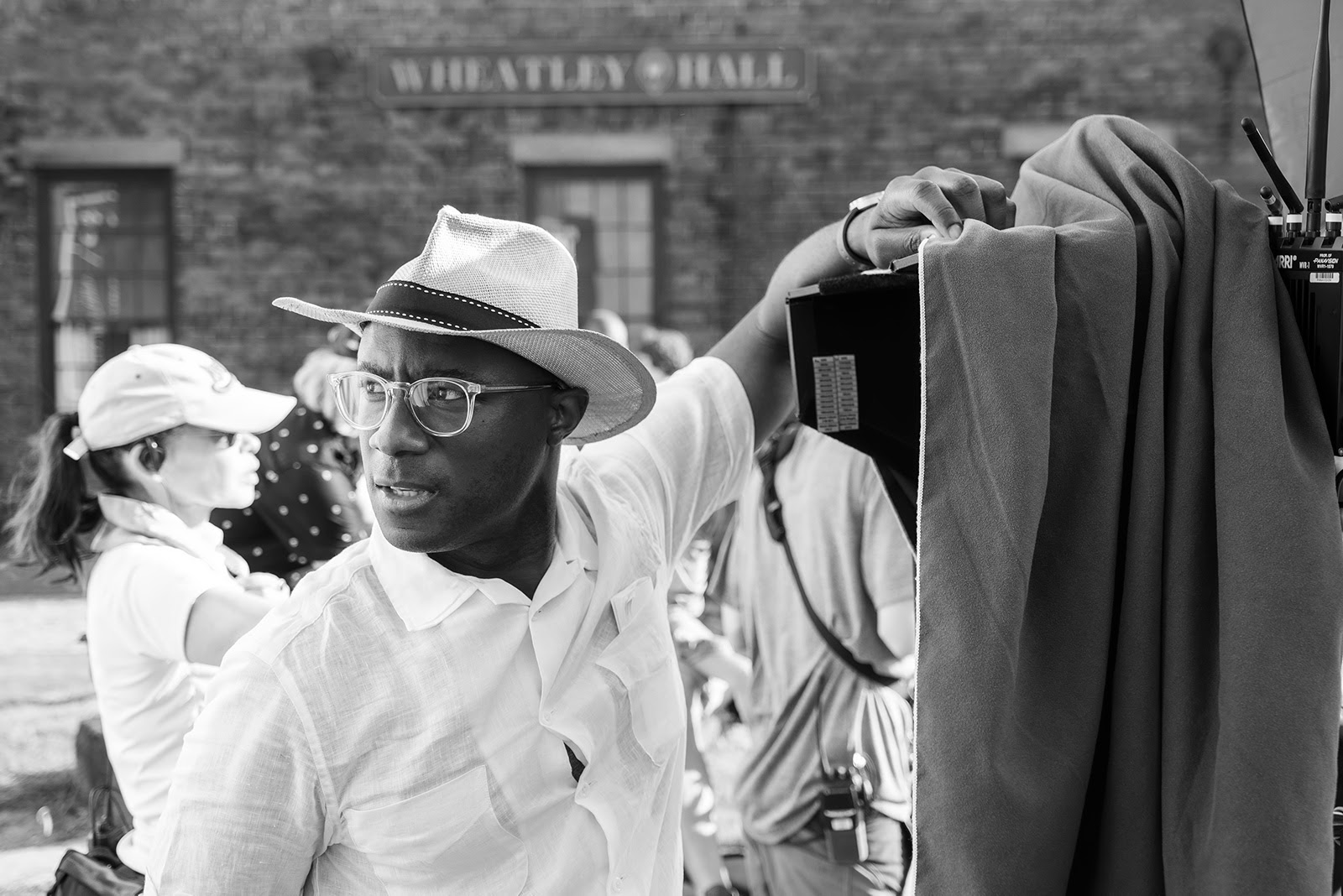
HULLFISH: Tell me the process of finding that as an undiscovered, unplanned thing.
MCMILLON: I think what inspired us to find that was through the dream sequences that Alex was doing in his episode, Indiana Autumn, and also in Chapter 2: South Carolina. Both of those had such an interesting tone and Tennessee Proverbs was just supposed to start with Joel arriving at his house, and I think one of the things that we wanted to make sure is that we didn’t lose Cora’s through-line.
So, entering the episode through her dream and these images and bringing back Jasper, who we lost the previous episode, it grounded that episode through her perspective because she’s not going to have a ton of dialogue in this episode, but you’re now as an audience member thinking, “Oh, I’m entering this episode through Cora’s point of view.” So, seeing this new world and where Ridgeway grew up through her eyes is the way we approached that.
HULLFISH: Any thoughts on those dream sequences, Alex?
O’FLINN: I always love a good dream sequence [laughs].
MCMILLON: He does them so well.
O’FLINN: As an editor, you always want to serve the story. So I’m not going to put a dream sequence on something that clearly is not warranted, but if the opportunity is there for a dream sequence I have taken that opportunity ten out of ten times. In episode 108 when you cut comedy they always say, “You want to cut it straight, and that’s going to allow the humor to breathe and live.” It’s the same thing with a dream because it’s so fantastical that you have to ground it into reality. You have to treat it like the same thing as if two characters were talking in a room. That’s going to give it its power.
If the opportunity is there for a dream sequence I have taken that opportunity ten out of ten times.
For me, one of the things that I love about the show is the sound design. From my standpoint, that is what really allows you to get into these dreams. Also, Nick [Brittell’s] score and these dissonant tones that you sometimes get. We had something called “the glitch” where if Nick had a piece of score and we wanted it to get weird in a moment, we could add this layer, almost like bending the matrix. It was these bended notes that sounded dissonant and let you know something is not right here, but it’s so subtle that we’re not being very heavy-handed.
Joi, I think we did this in some of your episodes where there’s a forest. Onna and Matt, our mixers, created these sounds in the forest that has a root in being naturalistic, but then there are these sounds that let you know, “Something feels off here. I don’t feel safe in this environment right now.” But it’s not as if we’re in a horror film. They take the natural environment and they bend it. When you’re cutting a dream, you have to have that. It doesn’t exist without that, and it was figuring out what this balance was: how is the sound talking to the picture?
That’s what I love about working on this project with the whole team is that everyone’s on from the beginning. Nick is writing cues while we’re editing dailies, and Onna was able to experiment with sounds and give us sounds from the very beginning. With that flashback I talked about in 108 with Cora running down the vines, that was inspired by Onna’s sound design. So, I think in modern editing, like Joi says, it’s 50 percent picture, 50 percent sound, and I’m spending a lot of time figuring out how this blueprint of the sonic landscape fits into the images that we’re showing as well.
HULLFISH: When you’re doing a dream sequence or any sequence at all that might be cut fairly dry with picture-only before the sound comes in, how does the sound inform any changes in the picture cut?
MCMILLON: It’s interesting because Barry and I met at film school and our sound professor, Richard Portman, who was a re-recording mixer—he did Rocky and Deer Hunter—he’s the one who ingrained in us: 50 percent picture, 50 percent sound. So, as we edit we’re always working on sound at the same time.
Onnalee Blank and Mat Waters, who are our re-recording mixers and Onna is also our sound supervisor, they do such a great job of seeing what we’ve outlined and taking it to the next level. They also worked on Game of Thrones, and so Onna was saying, “Underground was so much more challenging than Game of Thrones because each state is different. Each state has its own soundscape.” So they can’t piggyback off of Georgia when they’re in South Carolina. Now South Carolina gets its own sound, and now North Carolina gets its own sound.
That’s one of the things that, for us, when I’m on the mix stage they make fun of me because I always say, “Protect the cut,” because in some of the things that we designed there’s this transition that we were working with from one scene to the next, and sometimes you can hear the change in audio because now you’re outside. I know technically that is how it should go because now you’re at a new location, but I say, “If you can just smooth that for me.” So now, even though you’re in a new scene, your ears are transitioning to what you’re experiencing. That’s one of the things I love about our collaboration is that it’s not separate. We don’t give them the cut and then walk away. Alex was on the mix stage, I was on the mix stage, and we’re all figuring it out together. The sound is so complimentary to the picture because we’re working on it together.
HULLFISH: Alex, what’s the value of having you or Joi or an editor on the mix stage? Why does that have to happen?
O’FLINN: That’s a great question. I think the mix stage is one of the most creative, important stages of a film. I cannot say that loudly enough. I have seen films evolve from good to amazing on the mix stage. This wasn’t my episode, but I went to some of the playbacks for 110, and just the work that you guys did on the stage that really just dove into the emotion of that episode was inspiring to watch as a viewer.
There are so many things within an edit. There’s this misconception that “you’re picture locked, you’re basically done with the movie.” I would say when you picture lock, you’re about 60 percent done. That’s being generous. On the mix stage, all of these transitions of your edits, at least for me, are being supported by sounds that we’ve placed in a certain spot. As Joi said, that’s really just a blueprint. When Onna and Matt come on, they’re taking that to the next level, but they also are working within a shape that we’ve set up for them. So, we don’t just say, “Oh cool. Now we’re going to put in these sounds and it’s just going to work and we’re going to move on to the next thing.” No, we’re creating this entire landscape that is really affecting the pace of your entire show. So, as an editor, you really need to be there to collaborate with your mixers to really have that conversation of, “How are these two gigantic elements talking to one another?”
MCMILLON: It’s so true. I remember when we were working on Moonlight, Nat [Sanders] and I went to work on The Glass Castle and we actually weren’t on for the first mix, and watching it in Toronto was the first time that we had seen the final picture, final mix. Everyone was saying, “The movie’s amazing,” and me, Nat, and Barry looked at each other and said, “We got to go back in the mix.” Everyone was on such a high, but there were things that we had done in the edit that weren’t reflected in the mix.
When you don’t take the time to give the sound as much care and attention as you did the picture edit, it’s a case of diminishing returns.
They tried to mix Moonlight in five days and everything about Moonlight is so subtle but complex. So, when you don’t take the time to give the sound as much care and attention as you did the picture edit, “it’s a case of diminishing returns,” as Barry would say. What used to shine so bright is now a little dull because the sound doesn’t match what the picture is doing. So, we went back in, and thankfully Onnalee and Matt were available, and in three days we just did an overhaul on that sound and it made such a difference.
I remember it was supposed to be evident that Mahershala’s house, the character Juan, was in a better neighborhood than Chiron’s apartment, and one of the things that the sound design did was they added sprinklers in the background. If you grow up in Miami, if you’re rich enough to have a sprinkler system, that just sound-wise is telling you that you’re in a different area. Those little details are so important. It’s maybe something that you don’t catch on the first watch, but the second time you think, “Oh, I knew they were in a nicer neighborhood, and now I’m understanding that because there was a sprinkler system.”
So, I think that’s the importance of involving editors in the mix because so many other things will get lost in translation if they’re not there to say, “You have to remember this is supposed to be a different setting. This is supposed to sound different.” That’s one of the things that Barry is very adamant about, and he’ll fight for us to be on the mix stage, which I really appreciate because a lot of times budget-wise, editors don’t make it to the mix stage, but it is really, really important.
HULLFISH: Your old sound professor at school would be proud of that discussion.
I had something similar in my interview with the editor for Judas and the Black Messiah. He said the same thing: that one character is in this crappy apartment in the dark basically with all these urban sounds, and the very next scene is the white FBI agent living in the suburbs. He said, “We had very specific sounds in that apartment, and then we cut to this white suburban tract home and there are lawnmowers and the dogs are barking in a much different way. They’re angry dogs in the city and happy dogs in the suburbs.”
MCMILLON: Yeah, it makes a difference.
HULLFISH: Those are super-critical things and they can get dropped. You can have things that just fall out of the mix, and you say, “No, that’s a critical sound effect.”
MCMILLON: Exactly.
HULLFISH: Joi and Alex, thank you so much for a fascinating discussion. I really appreciate you guys spending the time and giving great insight into a really good TV show.
MCMILLON: Thanks for having us.
O’FLINN: Thanks so much. Yeah, it was a blast.

